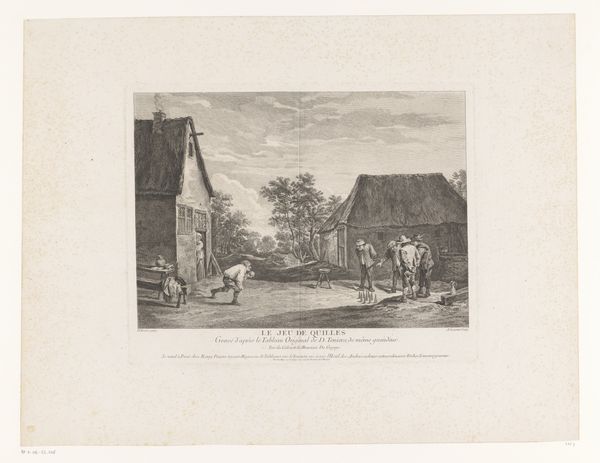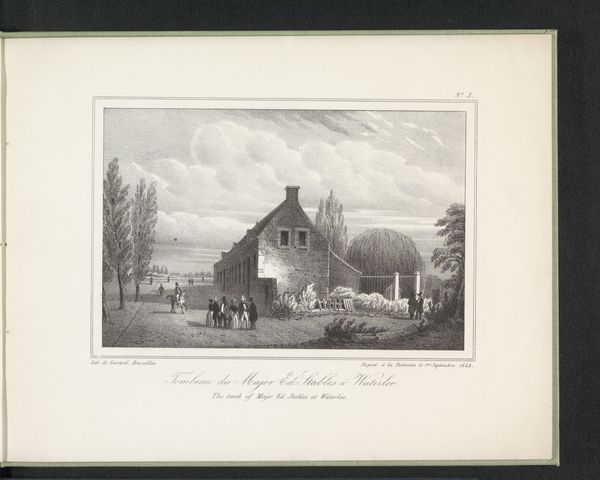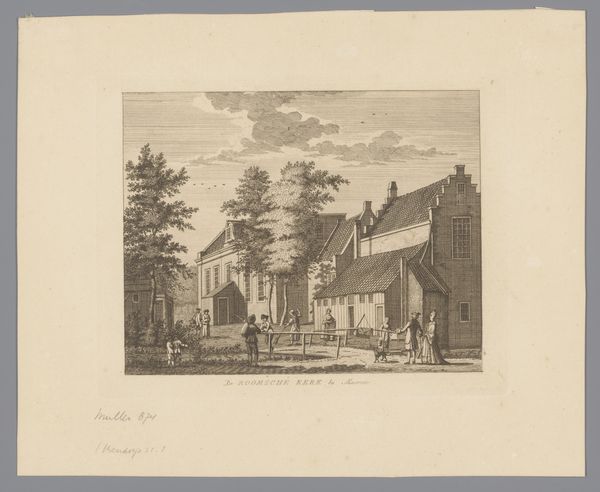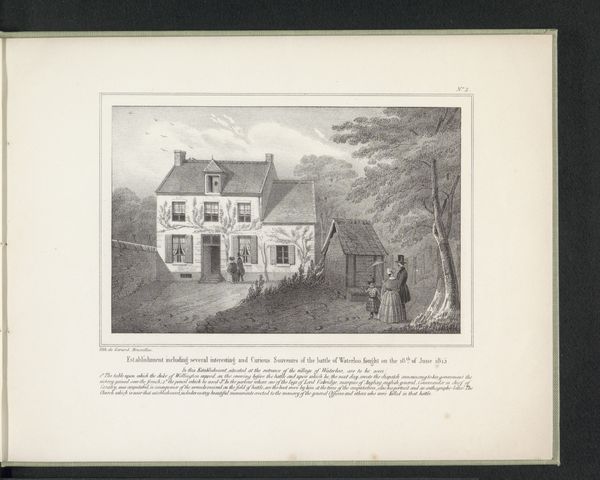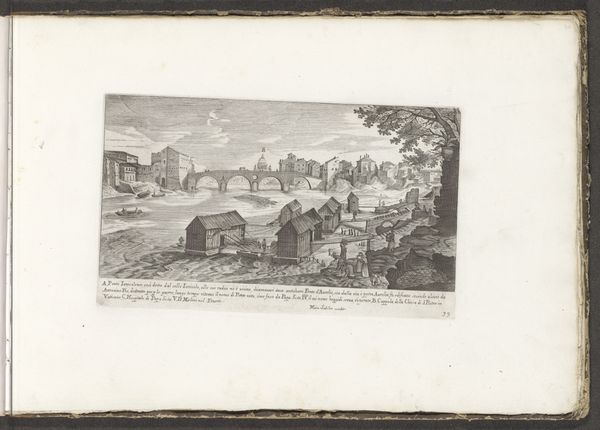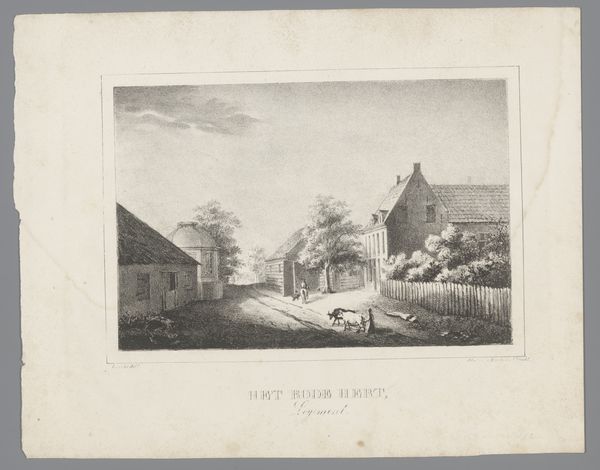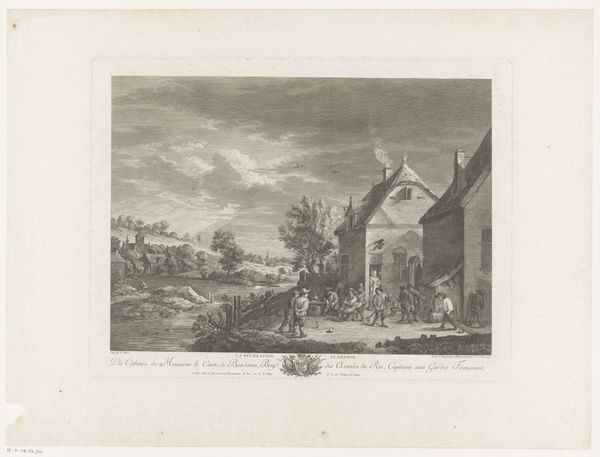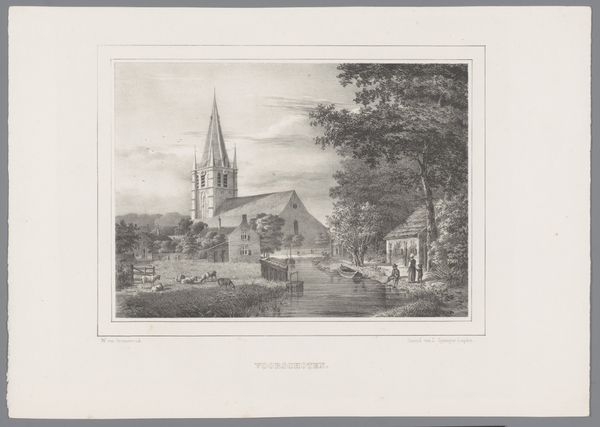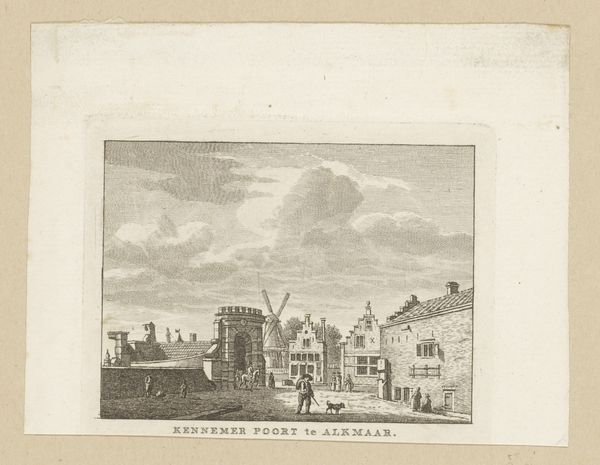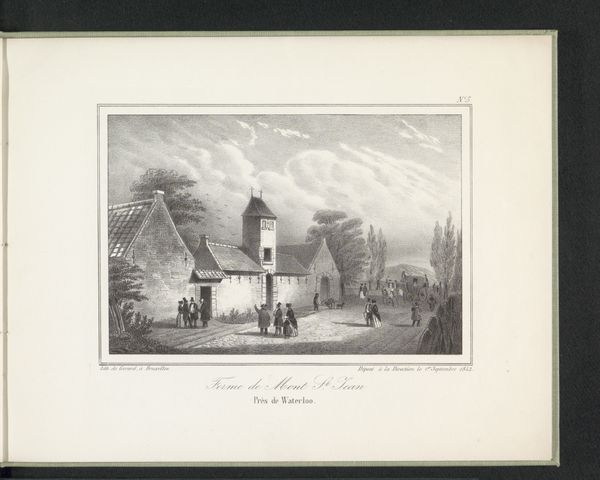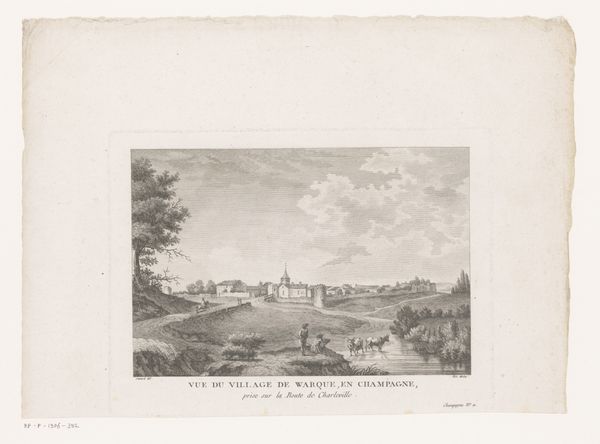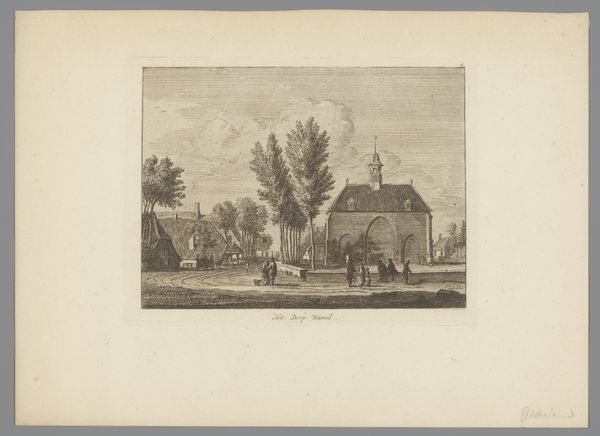
drawing, print, etching
#
drawing
# print
#
etching
#
landscape
#
cityscape
#
realism
Dimensions: height 225 mm, width 290 mm
Copyright: Rijks Museum: Open Domain
This print by H. Gérard depicts the ruined Hougoumont farm, likely not long after the Battle of Waterloo. Its greyscale tones, achieved through lithography, allow for a stark portrayal of devastation. Lithography, a relatively new process at the time, democratized image-making. Unlike traditional engravings that required meticulous hand-carving, lithography utilized the chemical properties of oil and water, enabling faster and more economical reproductions. This made scenes like the aftermath of Waterloo accessible to a wider audience, fueling public interest in the historic event. The print's stark realism—the crumbling walls, the somber figures amidst the ruins—speaks to the profound impact of war on the landscape and its people. Gérard's choice of lithography reflects a shift towards industrial methods of production and consumption, mirroring the societal changes ushered in by conflict and technological advancement. It reminds us that art is not just about aesthetics; it's about the processes, social context, and human experiences that shape its creation.
Comments
No comments
Be the first to comment and join the conversation on the ultimate creative platform.
